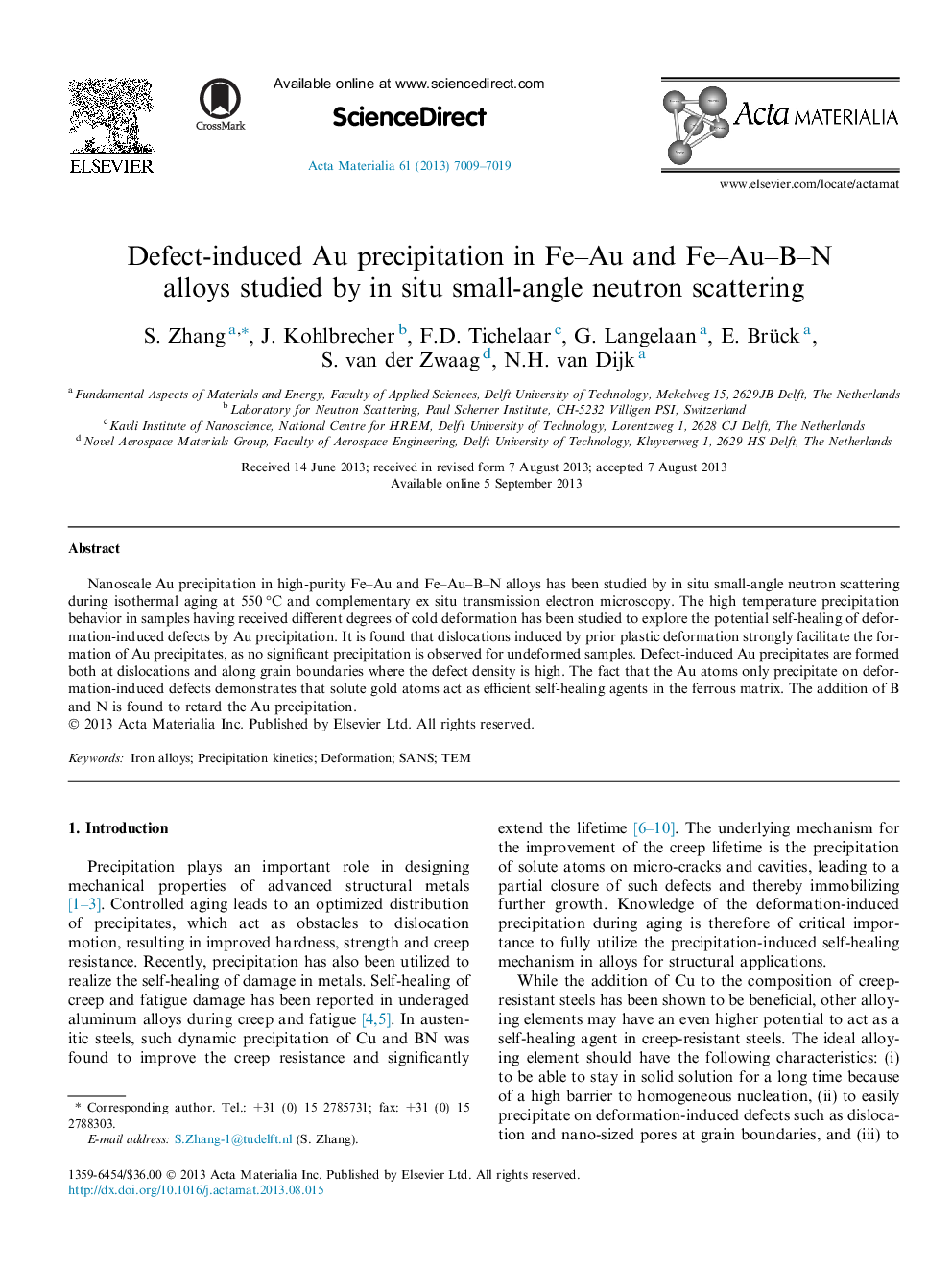| Article ID | Journal | Published Year | Pages | File Type |
|---|---|---|---|---|
| 1445753 | Acta Materialia | 2013 | 11 Pages |
Nanoscale Au precipitation in high-purity Fe–Au and Fe–Au–B–N alloys has been studied by in situ small-angle neutron scattering during isothermal aging at 550 °C and complementary ex situ transmission electron microscopy. The high temperature precipitation behavior in samples having received different degrees of cold deformation has been studied to explore the potential self-healing of deformation-induced defects by Au precipitation. It is found that dislocations induced by prior plastic deformation strongly facilitate the formation of Au precipitates, as no significant precipitation is observed for undeformed samples. Defect-induced Au precipitates are formed both at dislocations and along grain boundaries where the defect density is high. The fact that the Au atoms only precipitate on deformation-induced defects demonstrates that solute gold atoms act as efficient self-healing agents in the ferrous matrix. The addition of B and N is found to retard the Au precipitation.
